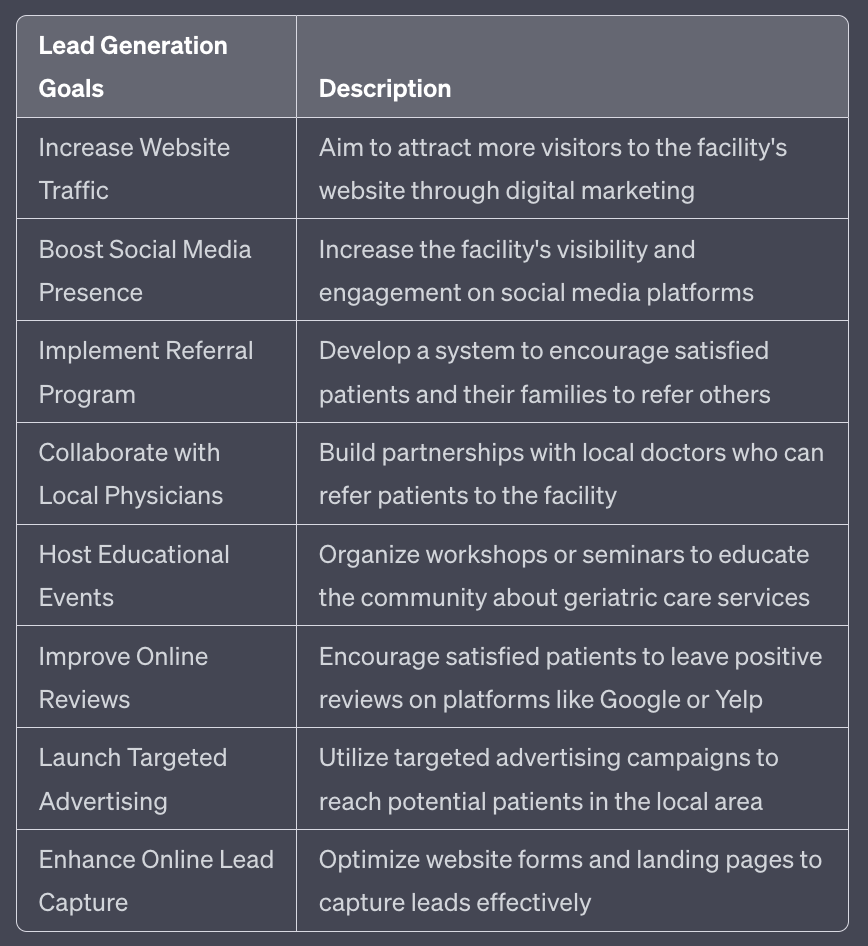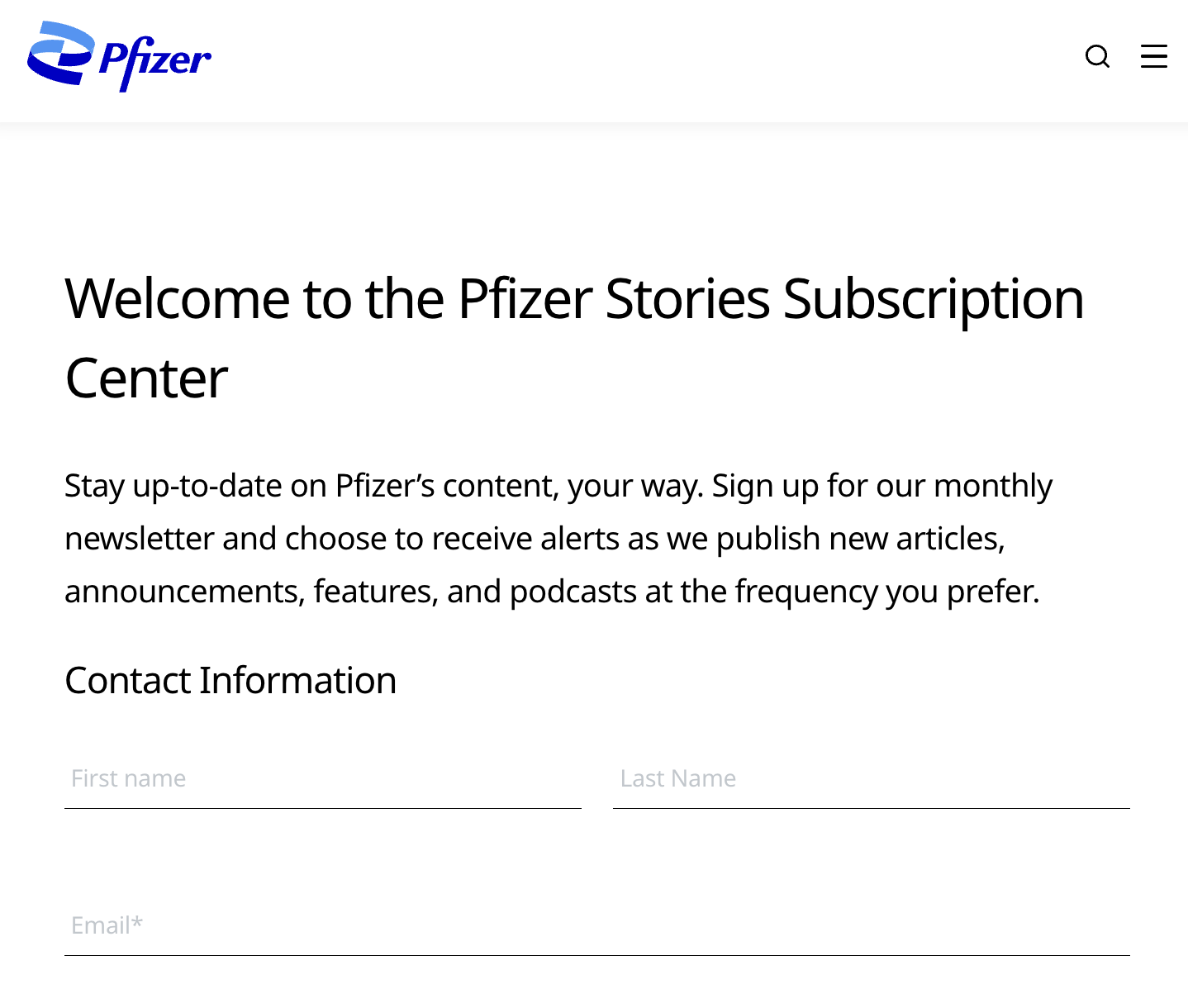Healthcare Lead Generation : 7 Steps to Success
Healthcare organizations need to generate leads more efficiently in order to grow their patient base and expand their reach.
This article will explore the importance and relevance of healthcare lead generation and the various strategies and techniques that can be used to generate quality leads.
Healthcare Lead Generation
To generate leads effectively in the healthcare niche, you must identify your target audience, leverage digital marketing channels, create valuable content, build trust and credibility, use lead capture forms, follow up with leads, and track and measure success.
Generating leads builds relationships, outperforms competitors, gathers insights, tailors campaigns, and enhances the customer experience.
For instance, healthcare companies can host webinars, survey professionals, and create user-friendly apps for appointment scheduling.
1. Identifying Your Target Audience
It is essential to identify your target audience before you can create a lead generation strategy.
1. Demographics
Make sure you consider the demographics of your target audience, their interests, and their motivations.
Let's say you're running a geriatric healthcare facility.
Through research, you've identified that your target audience primarily consists of individuals aged 60 and above, their adult children often in the age bracket of 40–60 years, and they primarily reside in urban areas.
2. Relevant Content
Your lead generation strategy will be tailored to your target audience once you've identified them.
Create content based on topics and keywords they'd like to see. The content you create can also lead people to your website.
So, given the demographic from the example above, you can start a blog on your website focusing on topics of interest to your audience.
You could include posts about maintaining mental health in old age, physical exercises suitable for seniors, dietary advice, and insights on managing chronic conditions like diabetes or heart disease.
You can also produce a how-to guide for adult children on how to support their aging parents.
3. Right Channels and Platforms
Different platforms can reach people in different ways, so it is essential to choose the one that is most relevant to your target audience.
Besides social media, you can use email marketing, SEO, and other marketing techniques to communicate your message.
Continuing on the example, you can leverage Facebook and email marketing primarily due to the prevalence of these platforms among your audience demographics.
4. Lead Generation Goals
Think about the type of leads you want, the number of leads you want to generate, and the timeline you need to achieve them.
When you know what you want to achieve, you can develop a strategy.
For example, your objective could be to increase inquiries about your facility and tours by 20% over the next six months.
2. Leveraging Digital Marketing Channels
Healthcare businesses need to leverage digital marketing channels to reach their target audiences.
Here are some of the ways to do that:
1. SEO
In search engine optimization (SEO), web pages are optimized for visibility and attractiveness to search engines.
The right indexing ensures that your website reaches potential customers searching for related terms and makes it more visible.
In the healthcare industry, SEO could involve optimizing a hospital's website for keywords like "emergency heart care in Seattle" to ensure that when potential patients are searching for these services in that location, the hospital's webpage appears at the top of search results.
2. Social Media Marketing
Social media marketing can improve brand awareness, boost visibility, and drive traffic through platforms like Facebook, Twitter, and Instagram.
For example, a local dental practice may use social media marketing to post regular content about dental health tips on their Facebook page.
This could engage current patients and attract new ones, particularly those in their immediate geographical area.
3. Email Marketing
With email marketing, you can share news, updates, promotional content, and more with customers.
Additionally, you can segment customers to send more targeted messages.
For instance, a pharmaceutical company could use email marketing to share updates on a new drug's clinical trials with doctors and healthcare providers.
These updates could include recent study results, potential side effects, and estimated timelines for availability.
4. Content Marketing
Your content marketing strategy involves creating relevant content for your target audience.
You can use content marketing to provide valuable information to customers as well as generate leads.
Content marketing can include blog posts, videos, infographics, ebooks, etc.
For example, a health insurance company might create a series of blog posts explaining the nuances of health insurance coverage, such as what out-of-pocket maximums mean or how deductibles work.
5. Telemedicine and Virtual Care
Using telemedicine and virtual care allows patients to access care via video, audio, or text messaging rather than visiting a physical location.
This can help expand your reach and attract new patients.
In addition to increasing access to care and lowering costs, virtual care and telemedicine can also help providers build relationships over time with their patients.
For instance, a patient recovering from knee surgery could have a virtual session with their physiotherapist where they demonstrate their progress with at-home exercises, receive feedback, and get updated on their next steps for recovery.
3. Creating Valuable Content
In healthcare marketing, content creation is vital for educating and engaging potential customers.
Here are a few tips to get you started:
1. Targeted Educational Content
Develop information resources like blog articles, whitepapers, and infographics that address the specific needs and pain points of the target audience.
Cover topics such as preventative care, treatment options, emerging technologies, and health tips to position your business as an authority in your niche.
2. Engaging Multimedia
Use videos, podcasts, and webinars to deliver content in visually appealing and interactive formats.
These mediums can be used to simplify complex medical concepts, showcase patient success stories, and provide a more engaging experience for potential leads.
3. Thought Leadership
Feature industry experts within the company or partner with renowned healthcare professionals to share their insights and opinions.
By offering thought-leadership articles, interviews, or opinion pieces, healthcare companies establish themselves as authoritative sources and attract leads seeking expert perspectives.
4. Building Trust and Credibility
The key to establishing yourself as a trusted partner in the medical community is to build trust and credibility.
To achieve this goal, you need to share expertise and knowledge and practice networking to build relationships.
1. Be a Credible Source of Information
Provide accurate, up-to-date, and thoroughly researched medical information that supports informed decision-making for professionals and patients alike.
For example, if you are a dietitian, you can conduct in-depth research on the latest advancements and studies in diet and healthy eating on a regular basis.
Share your findings on a blog and provide an in-depth analysis to help readers understand how to change their diet to be healthier.
2. Practice Networking
This involves building and maintaining relationships with other professionals to share knowledge, collaborate on initiatives, and explore opportunities that enhance healthcare delivery and outcomes.
For instance, if you attend a healthcare technology conference, connect with other healthcare professionals, and engage in a discussion that could potentially spark collaboration on a project.
5. Use Lead Capture Forms
Lead capture forms are vital for websites and landing pages as they help generate leads.
These forms capture important lead information such as contact details, demographics, and preferences.
Customization options allow the form to match the website or landing page, providing a professional and user-friendly experience.
Moreover, lead capture forms enable businesses to track and assess leads, identifying the ones most likely to convert.
This information helps optimize campaigns, increase conversions, and generate more leads.
6. Following Up with Leads
To enhance lead quality, it is crucial to promptly and personally follow up with potential leads.
A timely follow-up demonstrates your organization's efficiency and reliability.
When customers receive prompt responses to their inquiries, it fosters a sense of trust and confidence in your business.
Additionally, personalizing follow-ups is essential to making leads feel valued.
Addressing them by their name or referencing previous conversations makes them feel recognized and appreciated.
This personal touch significantly increases the likelihood of lead conversion and encourages them to take action.
7. Tracking and Measuring Success
An effective marketing strategy necessitates diligent tracking and measurement of lead generation success.
By closely monitoring your lead generation tactics, you can promptly pinpoint areas that require improvement and make the necessary adjustments.
Before embarking on the tracking and measurement process, it is crucial to define what success means for your organization.
This entails establishing specific goals, such as lead generation targets or setting a budget for lead generation activities.
Once these objectives are defined, you can initiate the tracking and measurement process to gauge your progress towards achieving them.
This approach ensures that you stay on track and can make informed decisions to optimize your lead generation efforts.
Unveiling the Power of Lead Generation in the Healthcare Industry
Lead generation is essential in order to build a successful healthcare business.
It provides a way to identify potential customers and allows businesses to target those who are most likely to need their products or services.
To implement an effective healthcare lead generation strategy, you must first understand the following:
Identifying your target audience
Leveraging digital marketing channels
Creating valuable content
Building trust and credibility
Using lead capture forms
Following up with leads
Tracking and measuring success
Investing in lead generation strategies is a surefire way to ensure that a healthcare business will reach its full potential.

















